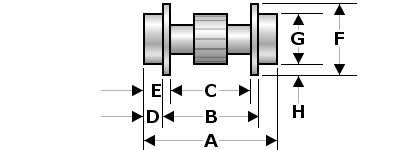Introduced in April 2010, the KIHA 40 Series is Eishindo's third powered train. The KIHA is a single unit, with no couplers; this reflects how the real units operate, which are self-powered diesels, and thus have no pantographs as the other trainsets do. The KIHAs have Eisnindo's second-generation mechanism, which is considerably better-running and more reliable than their 103s.
The powered chassis is a self-contained mechanism; the shell simply slips over the top. The shell contains two lighting units, one in each end. The drive train is permanently assembled and cannot be dismantled without cutting parts that cannot be repaired or replaced. The trucks are held in place with tension springs; these can be replaced if necessary. Drawings are not to scale.
Note to kitbashers: Although it is possible to shorten the chassis, the chassis parts are made from engineering plastic, so there's no way to glue or bond the parts. If you need a shorter chassis, try the 9000 Series. Lengthening the chassis is certainly an option, but note that as the units get longer, the more trouble they have with sharp curves. Copyright © 2008-2012 by David K. Smith. All Rights Reserved. |
||||||||||||||||||||||||||||||||||||||||||||||||||||||||||||||||||||||||||||||||||||||||||||||||||||||||||||||||





